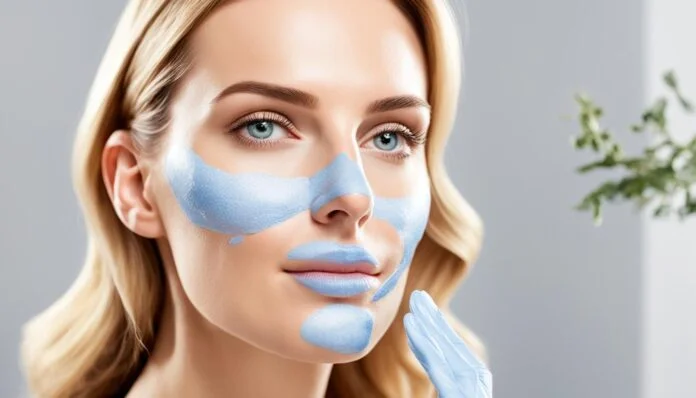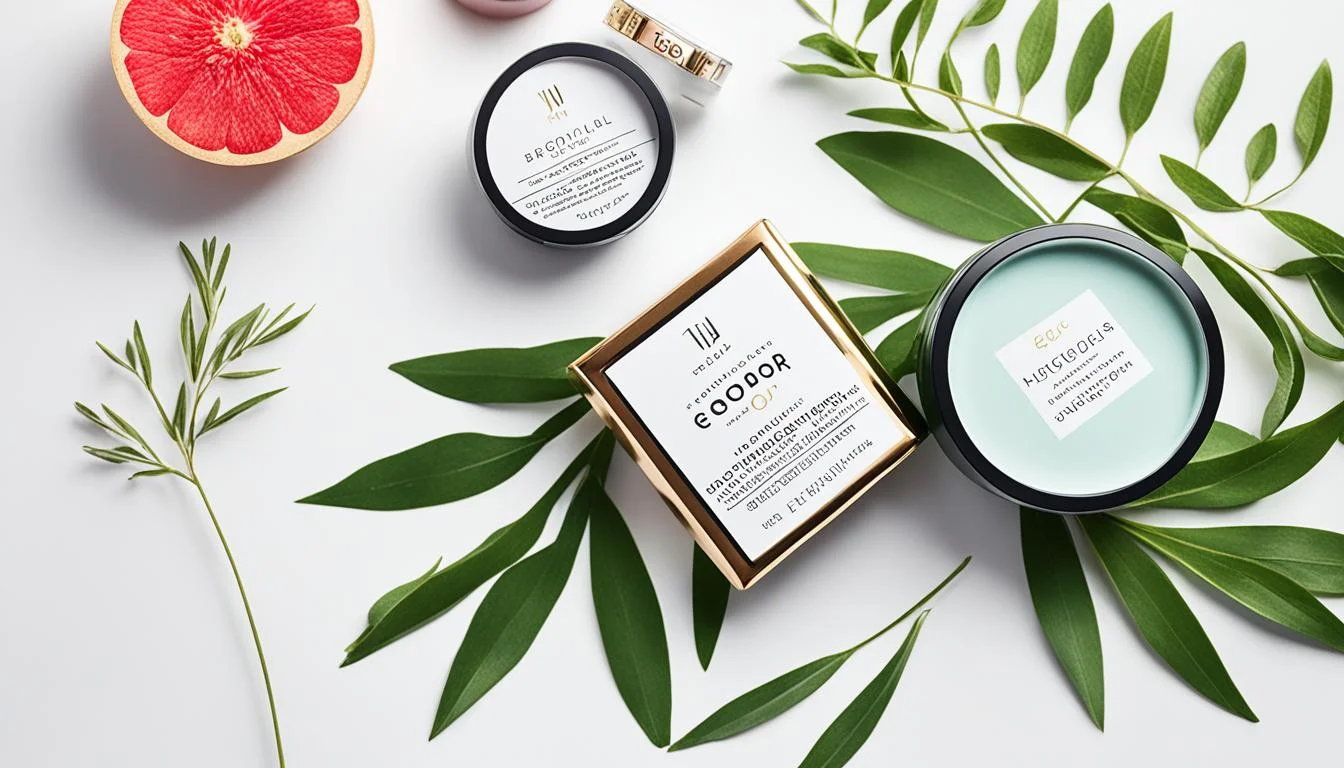
Did you know that over 70% of our skin’s health comes from its microbiome? This fact shows how important microorganisms are for our skin. Exploring postbiotic skincare reveals how these substances can change our skin for the better. They help keep our skin’s balance, keep moisture in, and make our skin glow.
Postbiotic skincare is more than just a trend. It’s becoming a key part of how we take care of our skin every day. It’s changing the way we look after our skin.
Key Takeaways
- Postbiotics promote moisturized and healthy skin.
- They help balance the skin’s microbiota and support moisture retention.
- Incorporating products like Celavive can improve hydration significantly.
- Daily use of products can address common skin issues, including dryness and blemishes.
- Postbiotics possess stability and extended shelf life compared to probiotics.
- Bioactive substances from beneficial microbes play a significant role in skin health.
- Postbiotics contribute to soothing and revitalizing skin through various formulations.
Understanding the Skin’s Microbiome
The skin microbiome is a complex world of microorganisms. It’s key to our skin’s health. It has about one billion bacteria per square centimeter, each helping to protect and keep the skin alive. These tiny helpers work together, and when they don’t, it can cause skin problems.
What is the Skin Microbiome?
The skin microbiome is a mix of bacteria, fungi, and viruses on our skin. A healthy balance is important for our skin. It keeps the skin safe from harm and helps our immune system. If this balance is off, it can lead to skin issues like acne and eczema.
As we get older, our skin’s microbiome can lose diversity. This can change how our skin looks and its ability to fight off the sun’s damage.
The Role of Microorganisms in Skin Health
Microorganisms are crucial for skin health. They keep away bad bacteria and help our immune system. Good bacteria like Staphylococcus epidermidis keep infections away and keep the skin balanced.
But, if our skin’s barrier is weak, bad bacteria can grow. This can cause inflammation and make skin conditions worse, like acne or rosacea.
To keep our skin’s microbiome healthy, we need to balance prebiotics, probiotics, and postbiotics. Prebiotics feed the good microbes. Probiotics add live cultures to keep the balance. Postbiotics are byproducts that help with skin health too.
| Microorganism | Role | Impact on Skin Health |
|---|---|---|
| Staphylococcus epidermidis | Protective Microbe | Stabilizes the microbiome, prevents infections |
| Cutibacterium acnes | Immune Regulator | Plays dual role in acne development and immune function |
| Corynebacterium | Body Odor Contributor | Associated with skin odor, varying by body area |
| Streptococcus | Potential Pathogen | Can cause infections if barrier is damaged |
| Pseudomonas | Potential Pathogen | Infection risk rises under compromised barrier conditions |
Keeping our skin’s microbiome in balance is key to healthy skin. By taking care of the good microbes, we can have glowing and healthy skin.
The Rise of Postbiotics in Skincare
Postbiotics are becoming more popular in skincare, showing a shift towards clean beauty and natural ingredients. These byproducts from probiotic microorganisms are changing how we think about skin health. As people learn more about postbiotics, companies are adding them to new skincare products.
Defining Postbiotics
Let’s talk about what postbiotics are. They are not the same as probiotics. Postbiotics include things like peptides, organic acids, and polysaccharides that help skin health. They don’t need to be alive like probiotics do. Instead, they help the skin by supporting good bacteria, which is key for a healthy skin environment.
How Postbiotics are Different from Probiotics and Prebiotics
Probiotics, prebiotics, and postbiotics each have their own role in skincare. Probiotics are live organisms that help keep the microbiome healthy. Prebiotics feed these good bacteria. Postbiotics, on the other hand, use the benefits from probiotics to improve skin health. Knowing the differences between them is important for those looking to use them together. Research shows that postbiotic skincare products are growing in popularity, with a strong future ahead.
Benefits of Postbiotic Skincare
Exploring postbiotic skincare reveals many benefits. These products boost hydration, fight inflammation, reduce aging signs, and fight bacteria. Let’s see how they help our skin.
Hydration and Barrier Enhancement
Postbiotics make skin more hydrated by making more ceramides. This keeps moisture in and strengthens the skin barrier. It makes skin more resistant to harm from the environment.
Anti-Inflammatory Properties
Many people deal with skin that’s sensitive and inflamed. Postbiotics offer anti-inflammatory effects. They calm redness and itching, making skin more balanced and comfy.
Anti-Aging and Antioxidant Effects
Using postbiotics in skincare fights aging signs. They protect skin from damage and boost collagen production. This keeps skin elastic and young-looking.
Antimicrobial Action
Postbiotics are strong against bacteria that cause acne. They help maintain a healthy balance of skin bacteria. This supports overall skin health.

| Benefit | Description |
|---|---|
| Hydration | Increases ceramide production for better moisture retention. |
| Anti-Inflammatory | Soothes irritation and reduces redness. |
| Anti-Aging | Protects against free radicals and stimulates collagen synthesis. |
| Antimicrobial | Targets acne-causing bacteria, promoting skin balance. |
Postbiotic Skincare: Ingredients That Matter
Understanding postbiotic ingredients is crucial for their benefits in skincare. Many products include these components to improve skin health and balance. By focusing on these ingredients, we can make our skincare routines more effective.
Common Postbiotic Ingredients in Skincare
Several postbiotic ingredients are popular in skincare:
- Lactic Acid: It helps with gentle exfoliation and balances the skin’s pH.
- Shea Butter: It moisturizes the skin and helps maintain its barrier function.
- Sunflower Oil Extract: It helps the skin absorb water and electrolytes, keeping it strong.
- Antimicrobial Peptides: These boost the skin’s immunity and protect it from irritants.
Natural Ingredients for Enhanced Efficacy
Adding natural ingredients to our skincare boosts the effectiveness of postbiotic products. Some examples include:
- Sweet Almond Oil: It deeply hydrates and nourishes the skin.
- Fruit Extracts: These have antioxidant properties that improve skin vitality.
- Prebiotic Sources: These come from fibrous foods and help beneficial microorganisms grow.
This mix of postbiotic and natural ingredients creates a nourishing skincare routine. By using these ingredients, we can achieve healthier, more resilient skin.
How Postbiotics Promote Skin Health
Postbiotics are key to keeping our skin healthy. They strengthen the skin barrier and help restore balance. This balance is key for keeping our skin hydrated and protected from harm.
Studies show that when probiotics eat prebiotics, they make postbiotics. These postbiotics are good for our skin. They help keep the good bacteria in our skin balanced.
This balance protects us from irritants, reduces inflammation, and makes our skin less sensitive. It’s like having a shield against the bad stuff that can harm our skin.
Clinical studies have found that postbiotics make our skin’s barrier stronger. This means our skin can hold moisture better. It also makes our skin look healthy and glowing.
Using postbiotics in our skincare products can really make a difference. Ingredients like those in the Kombucha Microbiome Collection work together to feed and soothe our skin.
Adding postbiotic skincare to our daily routine can lead to big improvements in our skin. It’s a way to take care of our skin from the inside out, making it healthier overall.
Combating Skin Issues with Postbiotic Skincare
Postbiotic skincare is key for sensitive and acne-prone skin. It helps fix common skin problems and boosts overall health by repairing the skin barrier. Regular use leads to smoother and healthier skin.
Addressing Sensitive and Acne-Prone Skin
Postbiotic products are great for sensitive skin and acne. They fight bad bacteria and reduce inflammation. This eases redness and discomfort.
These products also protect against pollution and smooth the skin. This helps control excess sebum, which can cause breakouts. Studies show that 28% of people using probiotics see fewer acne issues, proving postbiotics’ effectiveness.
Reinforcing the Skin Barrier
Postbiotics help repair a damaged skin barrier. They boost the immune system and fight inflammation, which can make skin age faster. Using postbiotics can make skin stronger against things that worsen eczema and acne.
Adding these products to our skincare routine can create a balanced, resilient skin. This reduces the chance of future sensitivities.
Product Innovations Featuring Postbiotics
We’re seeing a big change in skincare thanks to new postbiotic products. These products are boosting skin health. They show how important postbiotics are for making our skin better and safer.
Now, top brands are making products that fix specific skin problems. They also help the skin’s microbiome overall.
Trending Postbiotic Skincare Products
Some top postbiotic skincare products include:
- Avène Cicalfate + Restorative Protective Cream: This cream has a postbiotic called C-Restore. It protects the skin from harm, heals, and makes it better.
- mesoestetic Hydracream Fusion: This cream uses lactobacillus ferment. It helps keep the skin’s microbiota balanced and strengthens the skin barrier.
- Allies of Skin Molecular Saviour Probiotics Treatment Mist: A light mist that calms and fixes the skin with ingredients like silver and silk amino acids.
- KORRES Greek Yoghurt Probiotic Skin-Supplement Serum: This serum calms skin problems with prebiotics, probiotics, and important nutrients.
- Minimalist Polyhydroxy Acid (PHA) 03% Toner: A toner that moisturizes and gently removes dead skin while balancing the skin’s microbiome.
Brands Leading the Postbiotic Revolution
Some brands are leading the way with postbiotic technology:
- Elizabeth Arden: Their Superstart Probiotic Boost Skin Renewal Biocellulose sheet mask uses postbiotic lactococcus ferment lysate to make the skin look younger.
- La Roche-Posay: Their Lipikar Baume AP+M has Aqua Posae Filiformis. It helps dry skin and boosts overall health.
- VENN Skincare: Their Synbiotic Polyamine Body Wash has prebiotics, postbiotics, and probiotic ferments. It makes the skin barrier stronger and feeds the skin.
These brands show how postbiotic products can change our skincare. As people want better, science-backed solutions, we’ll see more new things in postbiotic skincare. This journey is exciting, promising to improve our skin’s health and strength.
The Future of Postbiotic Skincare
Looking ahead, the world of postbiotic skincare is buzzing with excitement. Scientists and industry leaders are diving deep into the benefits of postbiotics for skin health. Their research hints at new products that could meet our diverse skincare needs.
Ongoing Research and Development
Our skin is home to a trillion microorganisms, known as the skin microbiome. This ecosystem is key to our skin’s health. When it gets out of balance, it can lead to issues like acne and inflammation. Researchers are now focusing on how prebiotics, probiotics, and postbiotics can help.
Big names in skincare like Vichy, La Roche-Posay, and Lancôme are adding ingredients like lactobacillus extracts to their products. These ingredients are shown to improve skin quality. Studies are also looking into postbiotics like oligopeptides and biosurfactants for better hydration and anti-aging effects. This focus on research and development promises a bright future for skincare that works well and cares for our skin.
Consumer Trends Towards Clean Beauty
At the same time, we’re seeing a big shift in what consumers want from their skincare. People are looking for products without harmful chemicals. As postbiotics become more known, we expect to see them in more skincare products.
This change shows our desire for skincare that helps us in the long run. Brands are investing in new research and products that fit with the clean beauty trend. This means better products that work well with our skin.
| Brand | Product | Score |
|---|---|---|
| Dr. Barbara Sturm | Microbiotic Hydrating Blemish Control HA Serum | 82/100 |
| Gallinée | Probiotic Hydrating Face Cream | 82/100 |
| Allies Of Skin | Probiotic Mist | 75/100 |
| Dr. Jart+ | Vital Hydra Solution Biome Water Cream | 75/100 |
| Tula | Protect + Plump Firming & Hydrating Moisturizer | 75/100 |
| Venn | Synbiotic Defense Mist | 73/100 |
| ELEMIS | Superfood Day Cream Pre-Biotic Day Cream | 73/100 |
| Tropic | Fresh Waves Balancing Moisturiser | 70/100 |
Incorporating Postbiotic Skincare into Your Routine
Adding postbiotics to our skincare routine can make a big difference. We should look for products like serums and moisturizers with postbiotics. These products should be used at night to help our skin recover and get the benefits of these ingredients.
Here are some steps to follow for a good skincare routine in the summer:
- Use prebiotic cleansers at night to clean the skin and remove sweat and dirt.
- In the morning, a simple water rinse can wake up the skin without drying it out.
- Apply a high-quality postbiotic serum in the morning to keep skin hydrated and balanced.
- Always put on a broad-spectrum sunscreen last, choosing ones that are good for the microbiome to protect the skin and keep its ecosystem healthy.

Our lifestyle affects our skincare too. Drinking plenty of water, wearing light clothes, and using hats and sunglasses can help keep our skin healthy in the summer. By adding postbiotics to our skincare, we can get smoother, stronger skin.
| Steps for Daily Skincare Routine | Products/Practices |
|---|---|
| Evening Cleansing | Prebiotic Cleanser |
| Morning Refresh | Water Rinse |
| Serum Application | Postbiotic Serum |
| Sun Protection | Broad-Spectrum Sunscreen |
| Lifestyle Support | Hydration, Breathable Clothing, Hats |
By carefully adding postbiotic skincare to our daily routine, we can help our skin stay healthy and look great, even when it’s tough.
Conclusion
Our look into postbiotic skincare shows a new way to get healthy skin. Studies show that postbiotics help with hydration and make the skin barrier stronger. This leads to better-looking skin.
Using postbiotics in our daily skincare opens up many chances for glowing and strong skin. With new studies and products, we have solid reasons to choose what’s best for our skin. This helps us feel good about how our skin looks and feels.
More research and big brands are backing postbiotics in skincare. By learning about these ingredients, we can make smart choices for our skin. This way, we can get the most out of what postbiotics offer for our skin.
FAQ
What are postbiotics and how do they benefit my skin?
Postbiotics come from probiotic microorganisms but are not alive. They make your skin healthier by improving moisture, reducing swelling, and protecting against harm. This leads to a glowing and healthy look.
How do postbiotics differ from probiotics and prebiotics?
Probiotics are live bacteria that help your skin. Prebiotics feed these good bacteria. Postbiotics are the helpful substances left over after probiotics work. They work well without needing live bacteria.
Can postbiotic skincare help with sensitive skin conditions?
Yes, it’s great for sensitive and acne-prone skin. It calms irritation and fights bacteria that cause acne. This makes your skin more balanced and strong.
What key ingredients should I look for in postbiotic skincare products?
Search for lactobacillus ferment, organic acids, and natural oils like sweet almond oil. These boost postbiotics’ effects by feeding your skin and keeping moisture in.
How can I integrate postbiotic skincare into my daily routine?
Begin with cleansers, serums, and moisturizers that have postbiotics. Use them often to balance and feed your skin’s tiny life forms over time.
What are the long-term benefits of using postbiotic skincare?
Using postbiotic skincare often can make your skin more hydrated, strong, and less red. It also boosts your skin’s health now and in the future.
What are some popular brands that offer postbiotic skincare products?
Look for Celavive and mesoestetic for their postbiotic products. They use postbiotics to help with moisture, strength, and protecting against harm from the environment.
Is postbiotic skincare suitable for all skin types?
Yes, it works for all skin types, even sensitive and acne-prone skin. Postbiotics’ calming and moisturizing effects are good for any skin type.
What is the role of the skin microbiome in skincare?
The skin microbiome is full of tiny life forms that protect against bad bacteria, help your immune system, and keep your skin healthy. A balanced microbiome is key for a strong skin barrier and good skin health.






